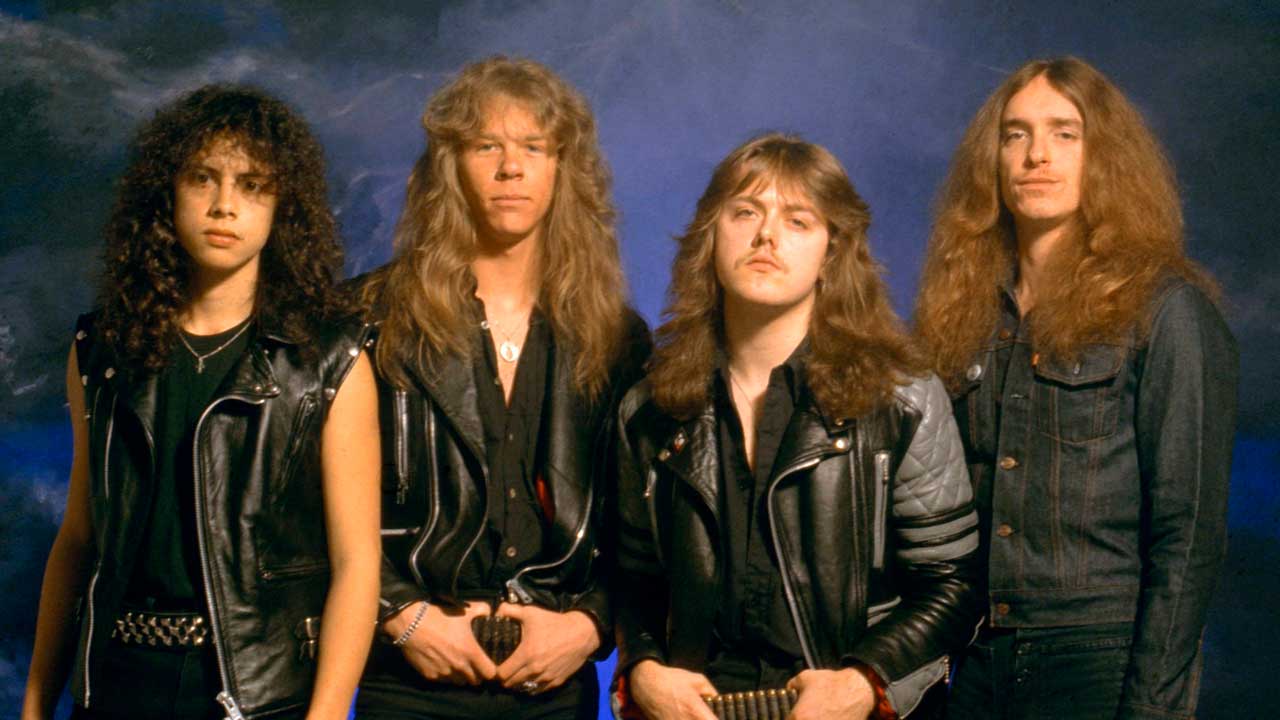"I ordered Chinese food and beer for them, and we just sat there and talked": Metallica, Ride The Lightning, and the meal that got them signed
Metallica changed the rules with their second album, Ride The Lightning. It was only a matter of time before the rest of the world would play along

Metallica weren’t just expanding their musical boundaries on their game-changing second album. Lyrically they were rising above the juvenile concerns of Kill ’Em All, engaging with political and literary topics. They tackled the destructive potential of the arms race on Fight Fire With Fire, and capital punishment on Ride The Lightning itself; Call Of Ktulu wore the influence of horror author HP Lovecraft, while For Whom The Bell Tolls took its title and subject matter from Ernest Hemingway’s 1940 Spanish Civil War novel of the same name. Metal Militia it wasn’t.
Metallica’s Ride The Lightning album was released on July 27, 1984. The majority of their fans were thrilled by the growth that had taken the band from the adolescent thrash of the debut to this newer, more complex sound. Importantly, it also attracted the attention of some influential people. One was Michael Alago, a rising young A&R guy at Elektra Records, the hip label that had once been home to The Doors, The Stooges and The MC5. Alago was so impressed with the album that he persuaded his superiors to let him try to sign Metallica.
“I saw them at that Roseland Ballroom show,” Alago recalls. “I knew there were other A&R people there. So basically I bolted the door shut, and wound up being the only one backstage early in the evening. I said: ‘Look, I’m freaking out. I love you guys and you have to come to my office tomorrow.’
“Well, they got there bright and early. I ordered Chinese food and beer for them, and we just sat there and talked. I think they liked that I was their age and that I was enthusiastic and that I’d take the right care of them. And I did, from day one.”
Thirty years on, Ride The Lightning remains Metallica’s most pivotal album. It was a gear change for the band themselves and for thrash metal as a whole, proving there was an audience for both outside the sweaty clubs of the Bay Area. Their hard-core fans might not have liked its more ‘commercial’ stylistic diversions, but the bands that followed certainly did – suddenly, every other thrash album started with an acoustic intro or had a weighty, introspective ballad in the middle of it.
Even Metallica themselves ripped it off. Master Of Puppets, their big breakthrough album, followed exactly the same structural pattern when it came to pacing, from the opening thrasher to the complex instrumental towards the end. Ride The Lightning was more than just a stepping stone – without it, Master Of Puppets wouldn’t exist in the shape the world knows it.
Sign up below to get the latest from Classic Rock, plus exclusive special offers, direct to your inbox!
Jon Wiederhorn is a veteran author, music journalist and host of the Backstaged: The Devil in Metal podcast. He is the co-author of the books Louder Than Hell: The Definitive Oral History of Metal, I’m the Man: The Story of That Guy From Anthrax, Ministry: The Lost Gospels According to Al Jourgensen, My Riot: Agnostic Front, Grit, Guts & Glory, and author of Raising Hell: Backstage Tales From the Lives of Metal Legends. He has worked on staff at Rolling Stone, MTV, VH1, Guitar Magazine, Guitar.com, Musician.com and Musicplayer.com, while his writing has appeared in TV Guide, Blender, SPIN, Classic Rock, Revolver, Metal Hammer, Stuff, Inked, Loudwire and Melody Maker.

